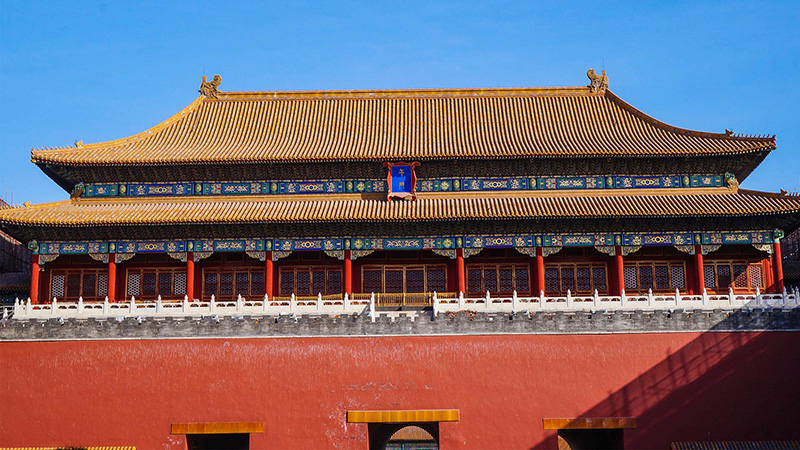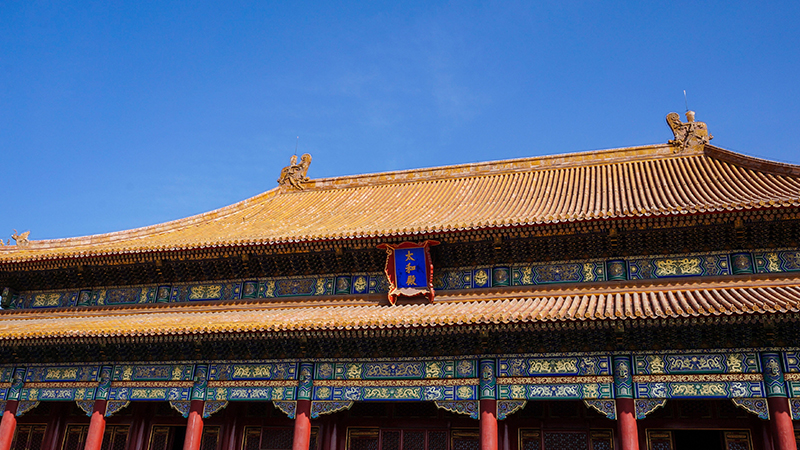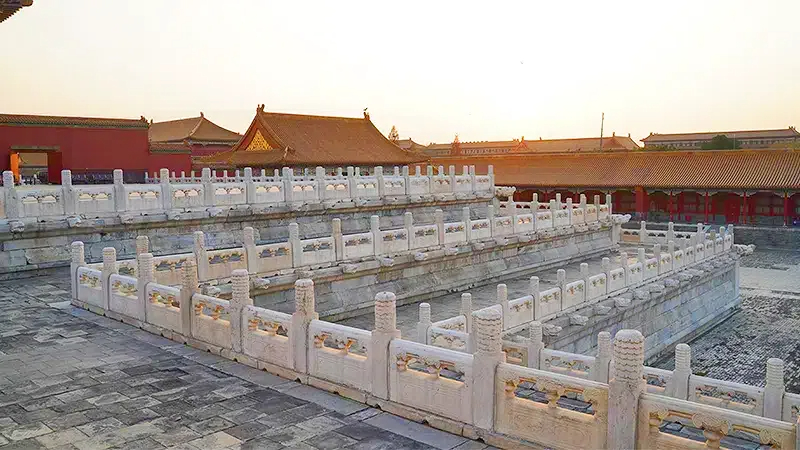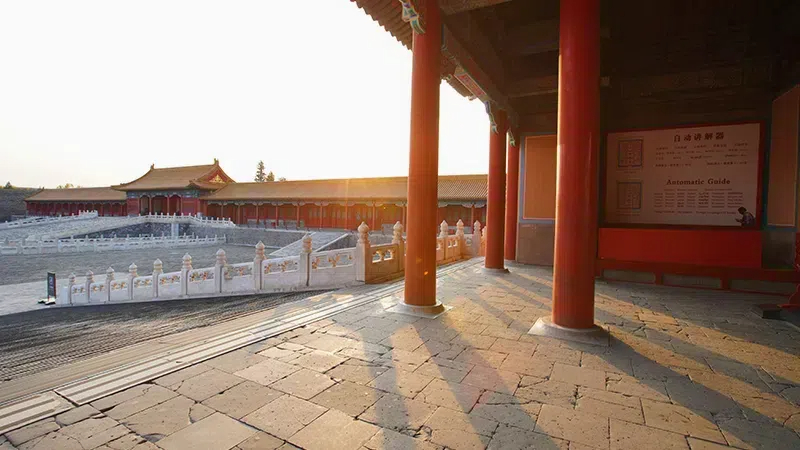The Forbidden City: Beijing's Must-See Pearl
Beijing's sprawling 178-acre Forbidden City is an impressive imperial palace complex full of wooden structures frozen in time. Visitors can experience them exactly how they were in antiquity and get a unique feel for Chinese culture and history. This complex contains 980 buildings spread over 90 neighborhoods and a myriad of relics from the Qing and Ming dynasties. It's guaranteed to be the highlight of your trip to Beijing, China's capital city, and an unforgettable immersion into living history.
The Forbidden City's Impressive History
 The Forbidden City
The Forbidden City
In 1406, Ming emperor Yongle commissioned work on his vision of a vast imperial palace complex, and the Forbidden City came to life fourteen years later in 1420. This special, sacrosanct place was off-limits to all but the emperor, his family, and select officials lending it the iconic name. For five hundred years, throughout the reign of the Ming and Qing dynasties, it was the epicenter of all state business, home to the most influential people in China, and a symbol of enduring Chinese culture.
The Forbidden City was first accessible to the Chinese public in 1925, and in 1987, it was declared a UNESCO World Heritage site. Today, tourists flock to the Forbidden City to get a glimpse of China's imperial past, marvel at traditional Chinese architecture, and stroll the sculpted gardens of this idyllic complex. Visitors will find preserved furniture, unique art, and an entire library that chronicles China's history with a collection of priceless first-edition works.
The Forbidden City's Architecture and Design
 Admire the palaces from a far distance
Admire the palaces from a far distance
Operating on a balance of function and feng shui, the palace complex seamlessly balances nature and structures into two distinct regions: the Inner Court and the Outer Court. The Inner Court was explicitly reserved for the emperor, his family, and concubines. This private area was off-limits to government officials or visiting heads of state and is one of the most exciting aspects of this destination. The Outer Court was where the emperor would entertain foreign dignitaries and conduct business. Both of these courts' architecture and design influences are a blend of Ming and Qing styles, as well as Han, Mongolian, and Tibetian influences.
Since this complex is so massive and intricate, it's good to have a tour company that you can trust to get the most out of your experience. For a decade, we've been helping people uncover the joys and wealth of history that this impressive complex has to offer with hassle-free, personalized tours.
Important Architectural Elements
Visitors are generally overwhelmed by the sheer beauty and history that await them inside the Forbidden City. While it's good to see all elements of this imperial palace complex, some stand out as exemplary examples of historical significance and Chinese design.
Wu Gate
 Wu Gate
Wu Gate
If you head to the southern side, you'll see the Wu Gate, also known as the Meridian Gate. With vibrant red walls and imposing flanks, this enormous gate opens into one of the complex's most huge courtyards, where you can see the Golden River and the Gate of Supreme Harmony on the other side. Visitors who want iconic pictures of themselves should consider posing outside Wu Gate.
Hall of Supreme Harmony
 Hall of Supreme Harmony
Hall of Supreme Harmony
Past the Gate of Supreme Harmony is one of the most important places in the complex, where the emperor himself held court. The Hall of Supreme Harmony is an imposingly wide and tall structure with elegant crimson pillars and accents of gold, a fitting place for the throne of China's most powerful emperor.
Great Marble Stairway
 Stairway built with marble stones
Stairway built with marble stones
The Great Marble Stairway is over sixteen meters long and is a testament to the vision of the Ming Dynasty. This intricately carved stairway is right near the Hall of Preserved Harmony and is easily one of the most impressive elements of the complex.
Imperial Garden
The gorgeous and historic buildings are one piece of the grand Forbidden City puzzle, but the outdoor elements shouldn't be overlooked. The Imperial Garden near the Gate of Terrestrial Tranquility is another gift from the Ming Dynasty that perfectly embodies the elegance of Chinese landscaping and is studded with small structures, creative gardens, and statues.
Best Time to Visit the Forbidden City
 When it's about sunset in the Forbidden City
When it's about sunset in the Forbidden City
Spring and autumn are the best times to visit the imperial palace complex if you want to avoid crowds and enjoy relatively cooler temperatures. You should also keep in mind that October 1st to 7th is China's Golden Week holiday, so you'll run into lots of people at the Forbidden City.
It also pays to book your ticket for right when the complex opens, at 8:30 a.m., to have more of it to yourself. The Forbidden City is a highly popular attraction, so you'll need to book well in advance, especially if traveling there on a weekend or school holiday. The complex is open Tuesday to Sunday, except for public holidays. It opens at 8:30 a.m. Closing times vary by season. Between April and October, the last entry is at 4 p.m., and the complex closes at 5 p.m. From November to March, it closes half an hour earlier, with the last entry at 3:30 p.m. and closing at 4:30 p.m.
Also, give yourself ample time to walk around. There are plenty of beautiful and unique places to linger in and soak up, so planning on spending the better part of the day in the palace complex is ideal and recommended.
What to Bring to the Forbidden City
You'll need to bring your passport and wear comfortable shoes and lightweight, loose clothing to keep you covered and protect your skin from the sun. You can bring bottled water into the Forbidden City, but outside food is off-limits. Fortunately, there are quite a few spots to get a bite to eat inside the walls. This complex is also accessible to those with mobility challenges, although some places might not be wheelchair accessible. Rest assured, you will still be able to see much of the complex and understand the importance of each area, especially if you're with a knowledgeable guide.
The ticket price varies depending on the season, and certain rooms, like the Treasure Gallery, have an additional fee. Contact us for help booking your tickets and understanding what to prioritize when visiting. The Forbidden City is located at 4 Jing Shan Qian Jie, a few minutes away from Tiananmen East subway station. It's a highly accessible, easy-to-find spot that you can get to no matter where you are in Beijing.
At Travel with China Odyssey Tours, we offer white-glove service, personalized travel itineraries, private cars, and guides to make your next vacation in China as smooth and memorable as possible. We can work with any interest or budget and offer 24/7 customer service to provide you with complete peace of mind. Let us help you experience the pearl of Beijing, the Forbidden City.
What Our Clients Say
"Great Customized Service", "Trip of A Lifetime", "Exceed All Expectations"









